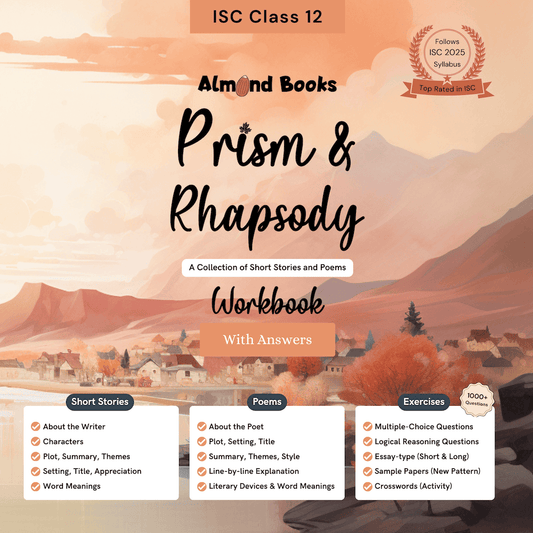From Code to Creation: Exploring the Intersection of Robotics and AI in ICSE
by AlmondBooks Support on Mar 05, 2023
The integration of Robotics and Artificial Intelligence (AI) is becoming increasingly relevant in today's technology-driven world. As such, it is crucial to introduce students to these concepts early on and equip them with the necessary competencies to succeed in the field. The aim of latest ICSE Robotics & AI syllabus given below outlines a comprehensive approach to introducing students to this subject and facilitating their understanding and application through classroom instruction, laboratory, and self-directed project-based learning.
Aim of syllabus (ICSE Class 9-10 Robotics and Artificial Intelligence)
1. To develop an understanding of concepts and applications in Robotics and Artificial Intelligence (AI).
2. To develop competencies in Robotics and AI via classroom instruction, laboratory and self directed project-based learning approach.
3. To facilitate appreciation, understanding and application of concepts of Robotics and AI through learning and engaging in hands-on activities.
4. To instill AI-Readiness skills in students vide key concepts in AI, such as, Data, Computer Vision and Natural Language Processing.
5. To introduce the students to the concepts of AI Project Framework.
6. To familiarize students with computational skills (basic python coding language).
7. To create awareness about ethical considerations of AI.
The primary goal of this syllabus is to develop an understanding of the concepts and applications of Robotics and AI. Robotics is the field of engineering and science that deals with the design, construction, and operation of robots, while Artificial Intelligence (AI) is the branch of computer science that focuses on the development of intelligent machines that can simulate human behaviour and thought processes. These two fields are interconnected, and it is essential to understand how they work together to create intelligent machines.
To achieve this goal, the syllabus proposes a hands-on learning approach that involves classroom instruction, laboratory work, and self-directed project-based learning. This approach allows students to develop competencies in Robotics and AI and apply their understanding of the concepts to practical projects. The focus on hands-on activities facilitates appreciation, understanding, and application of concepts of Robotics and AI, which is crucial to the success of students in this field.
Another critical aspect of the syllabus is the instillation of AI-Readiness skills in students. Key concepts in AI, such as Data, Computer Vision, and Natural Language Processing, are introduced to students. Additionally, students are familiarised with computational skills, such as basic python coding language, to develop their abilities in AI project frameworks. These skills are essential in today's job market and equip students with the necessary competencies to succeed in the field of Robotics and AI.
Finally, the syllabus creates awareness about the ethical considerations of AI. As students learn about the capabilities and limitations of intelligent machines, it is crucial to instill a sense of responsibility in them. Ethical considerations such as privacy, fairness, and transparency are introduced to students to ensure that they are aware of the impact their work in this field can have on society.
In conclusion, the aim of syllabus outlined above is a comprehensive approach to introducing students to the concepts and applications of Robotics and AI. By utilising a hands-on learning approach and introducing AI-Readiness skills, students can develop the competencies necessary to succeed in this field. Additionally, the focus on ethical considerations ensures that students are aware of the impact their work can have on society. To sum up, this syllabus provides an excellent foundation for students interested in Robotics and AI and equips them with the necessary competencies to succeed in this field.
Helpful Resources














